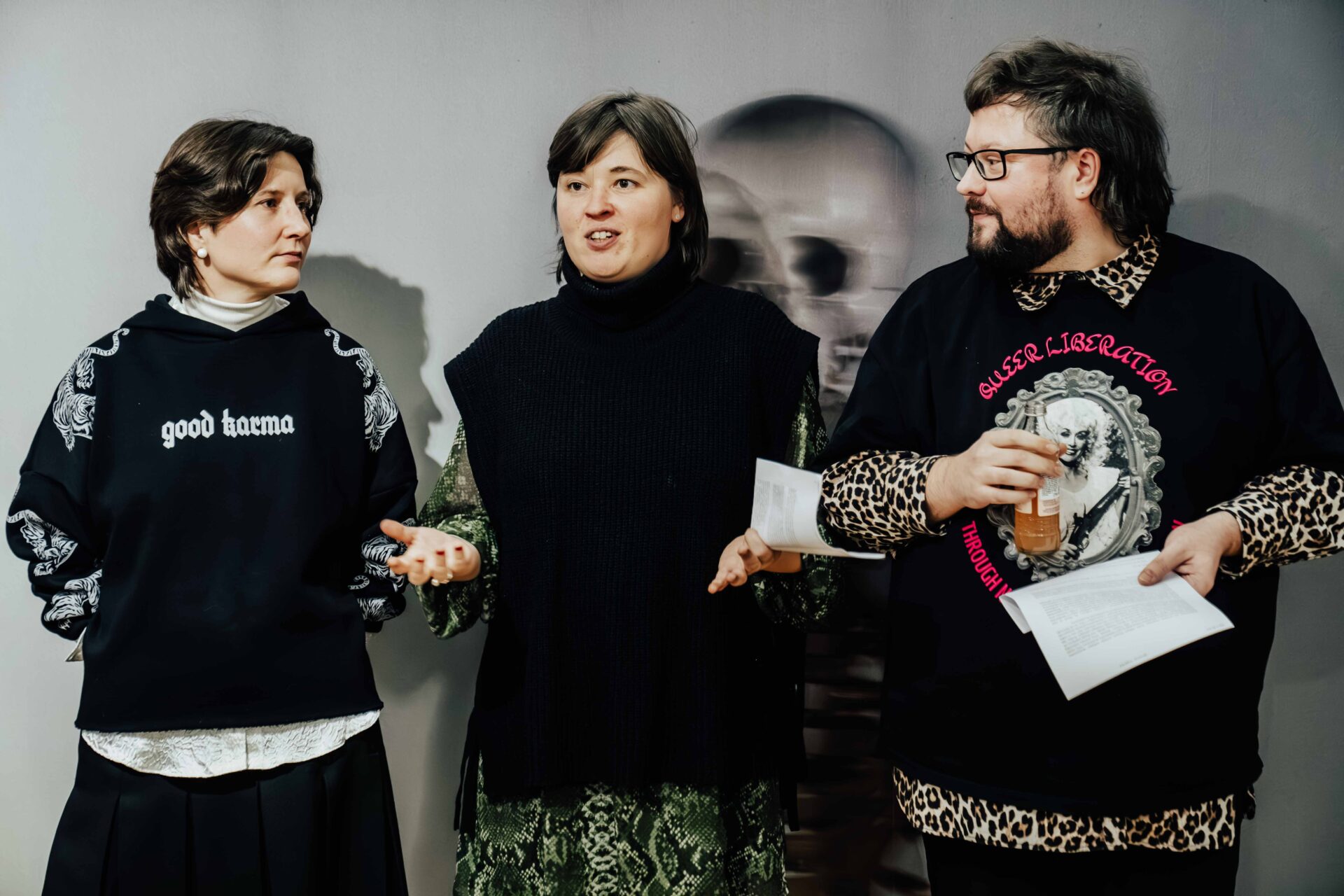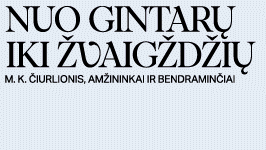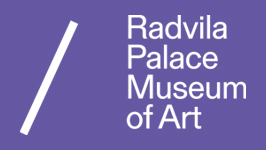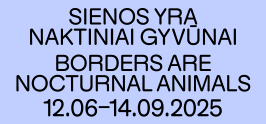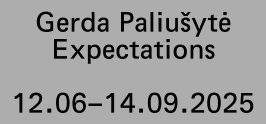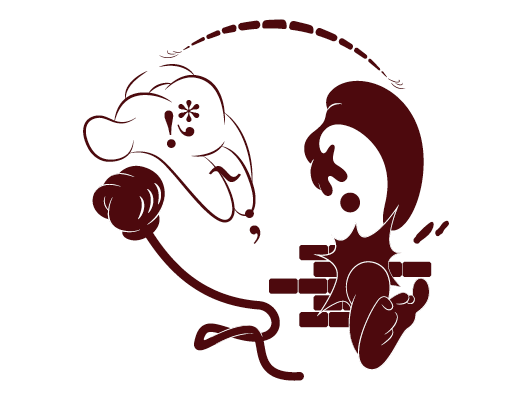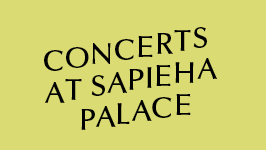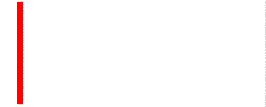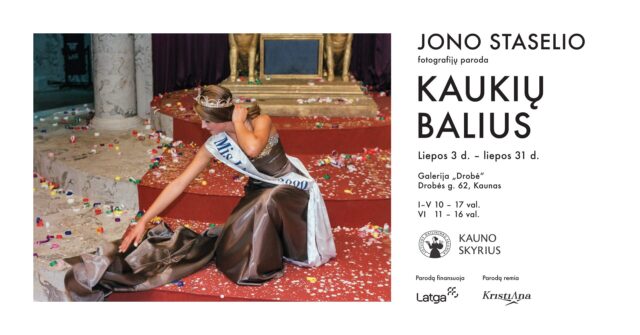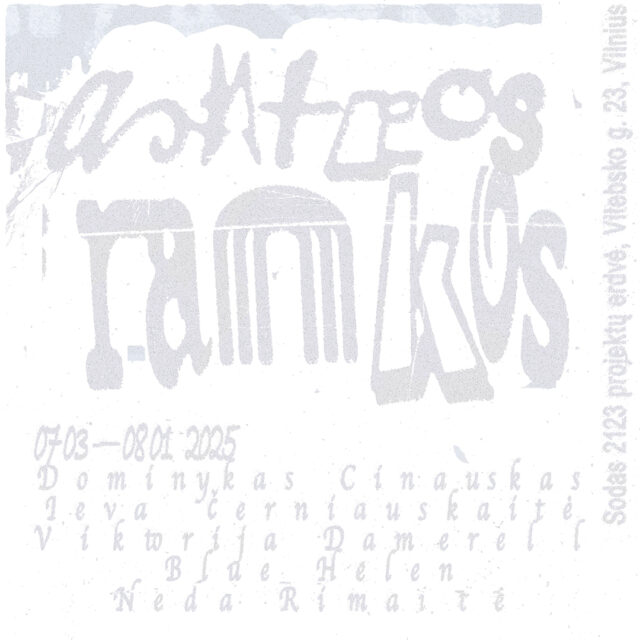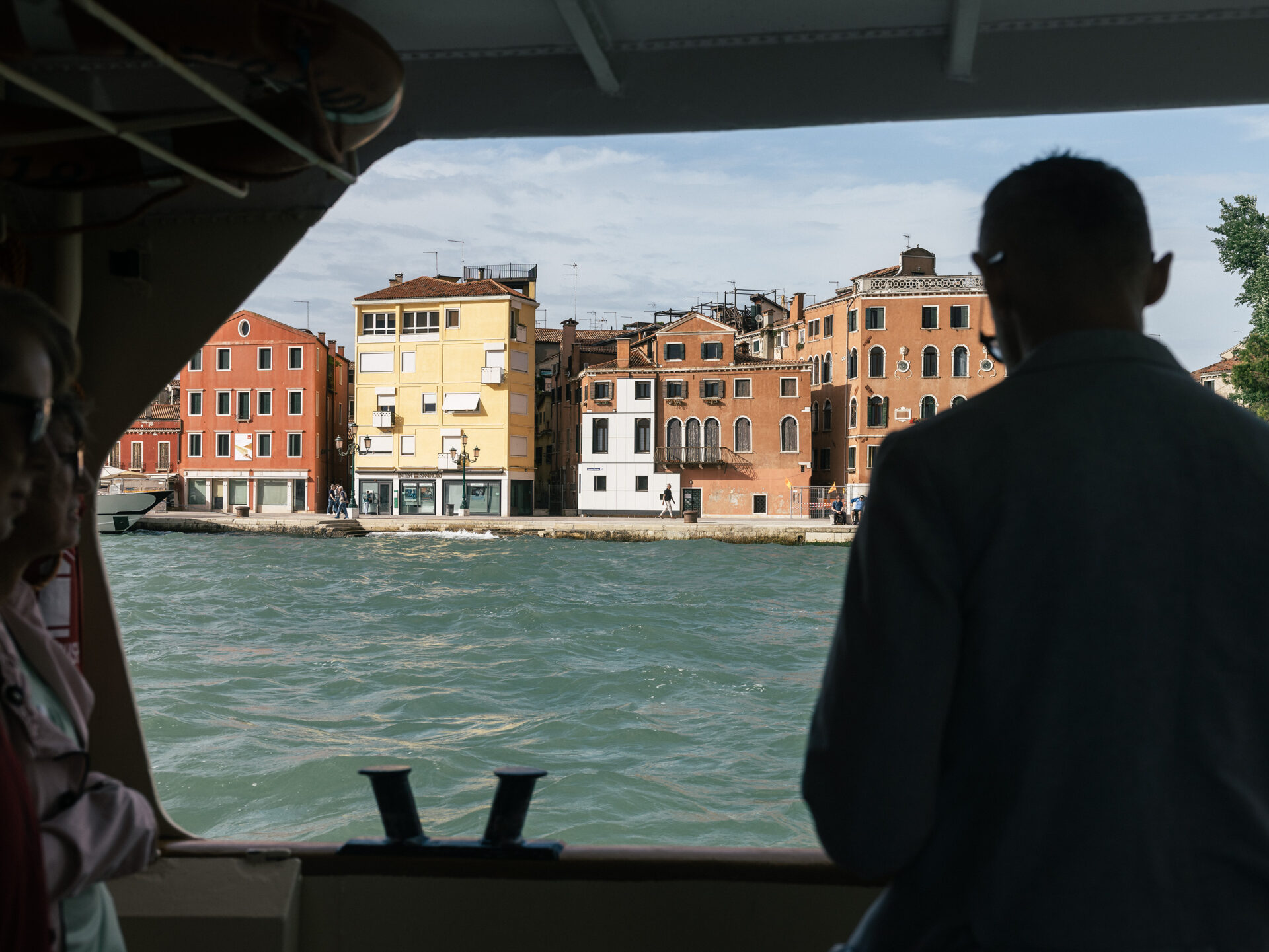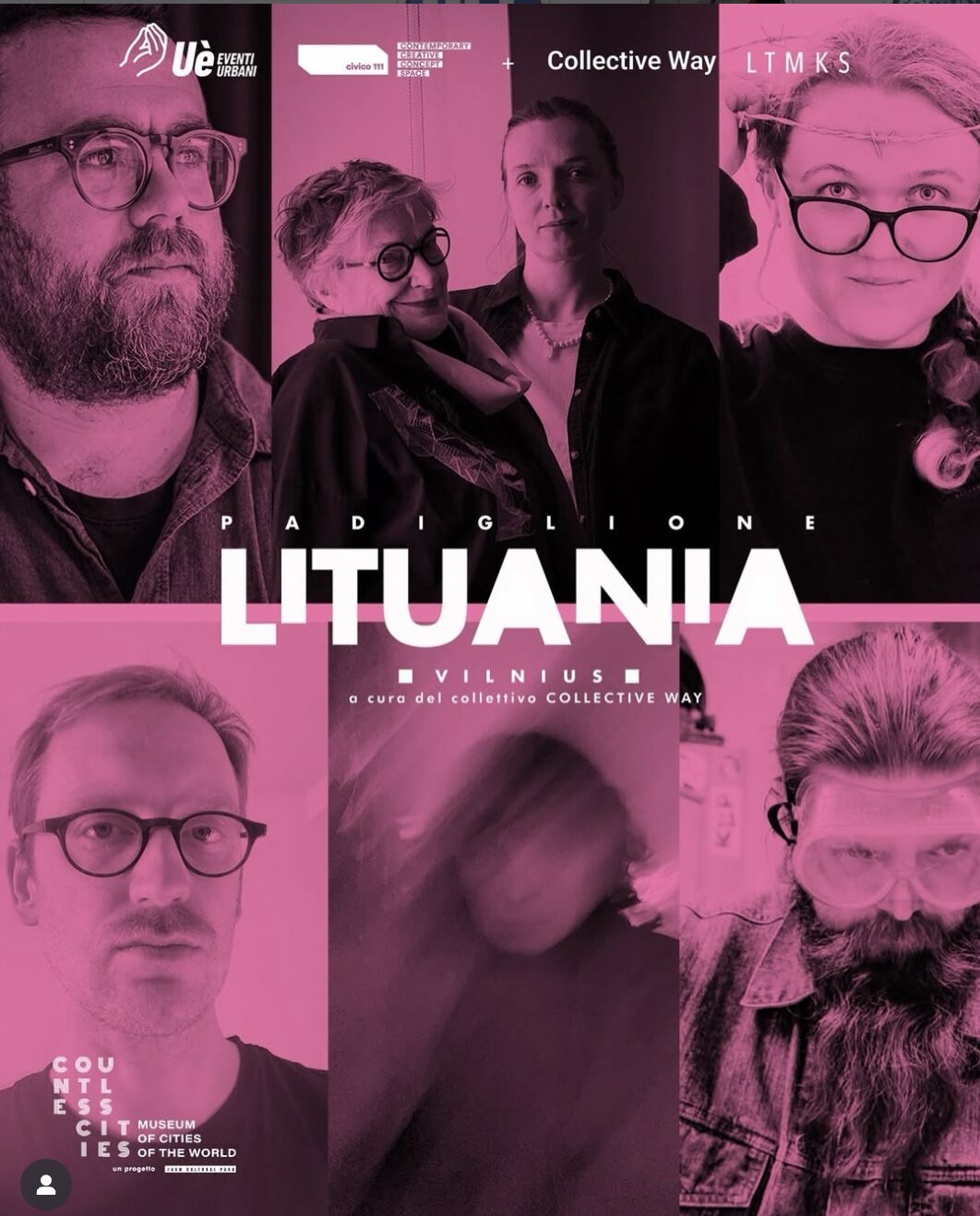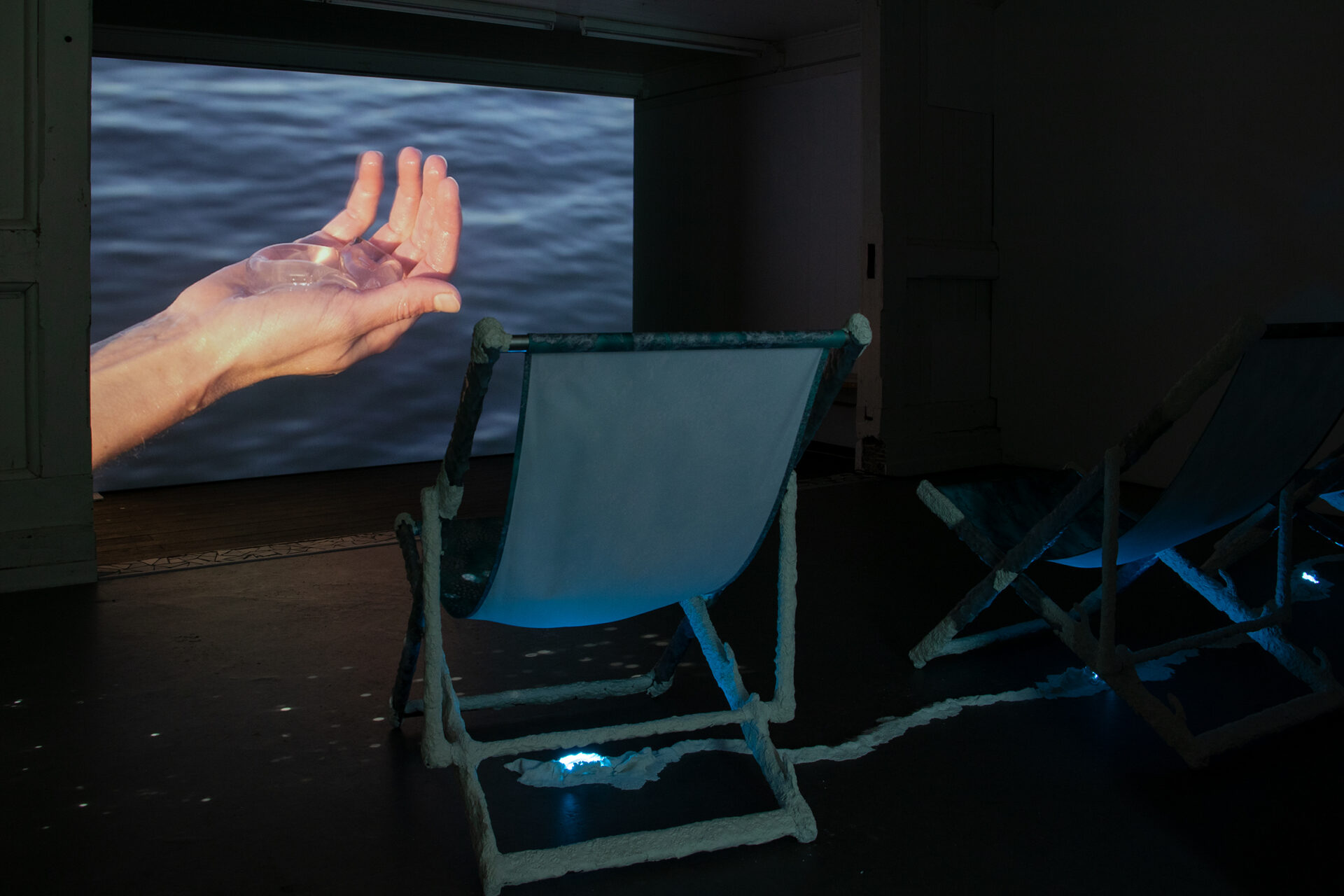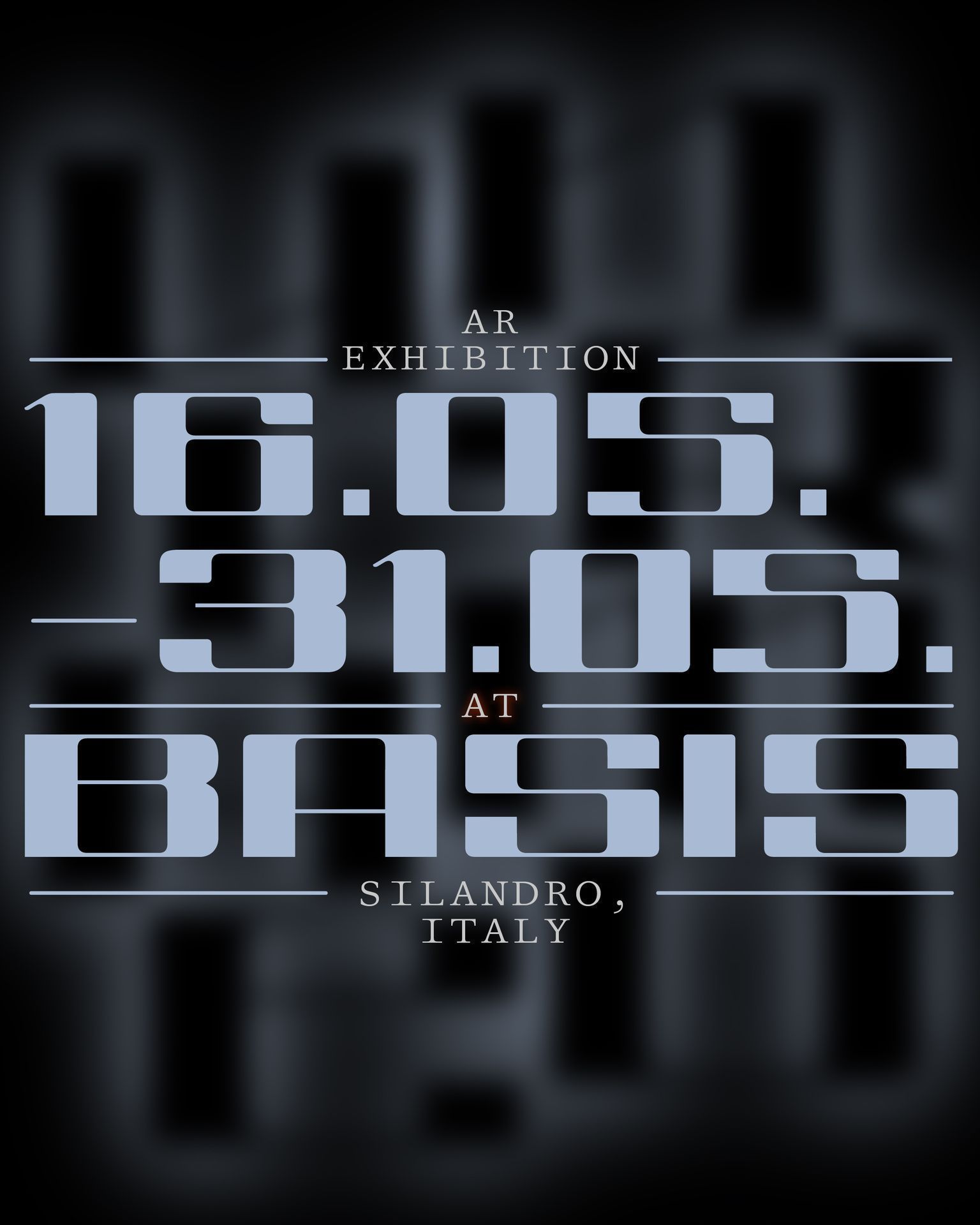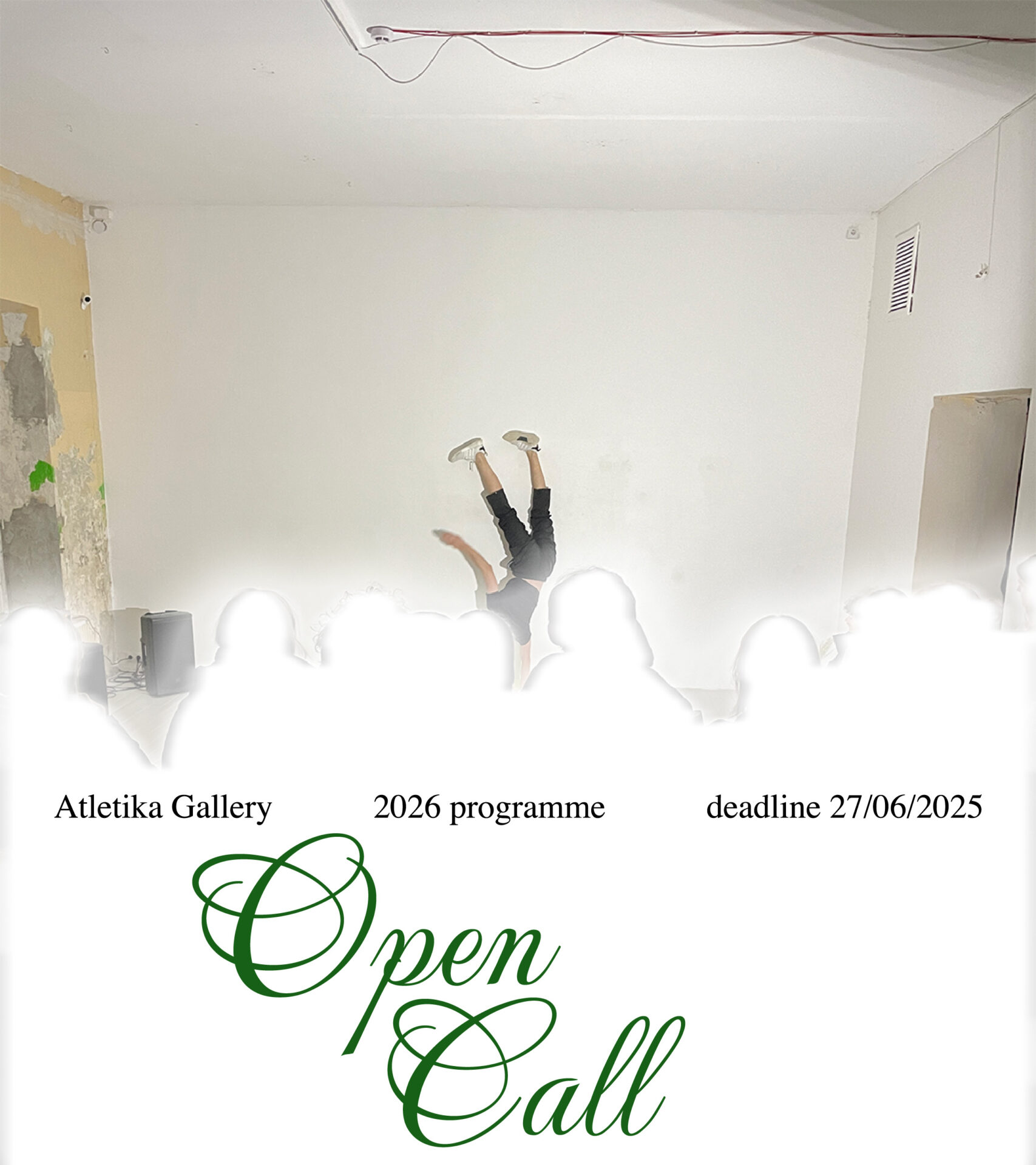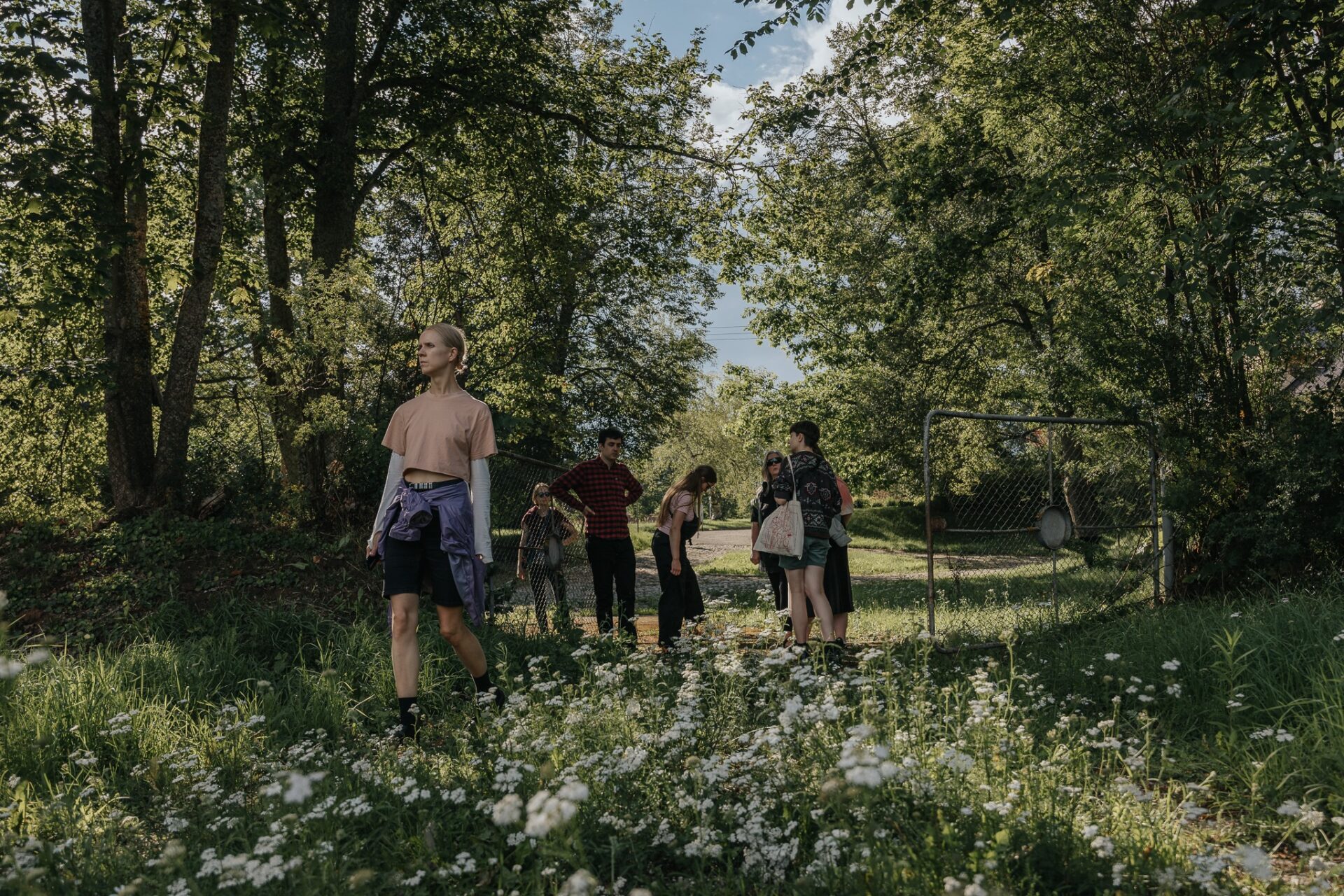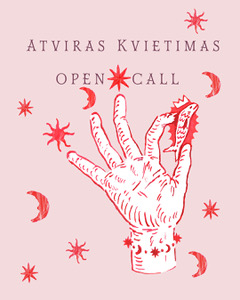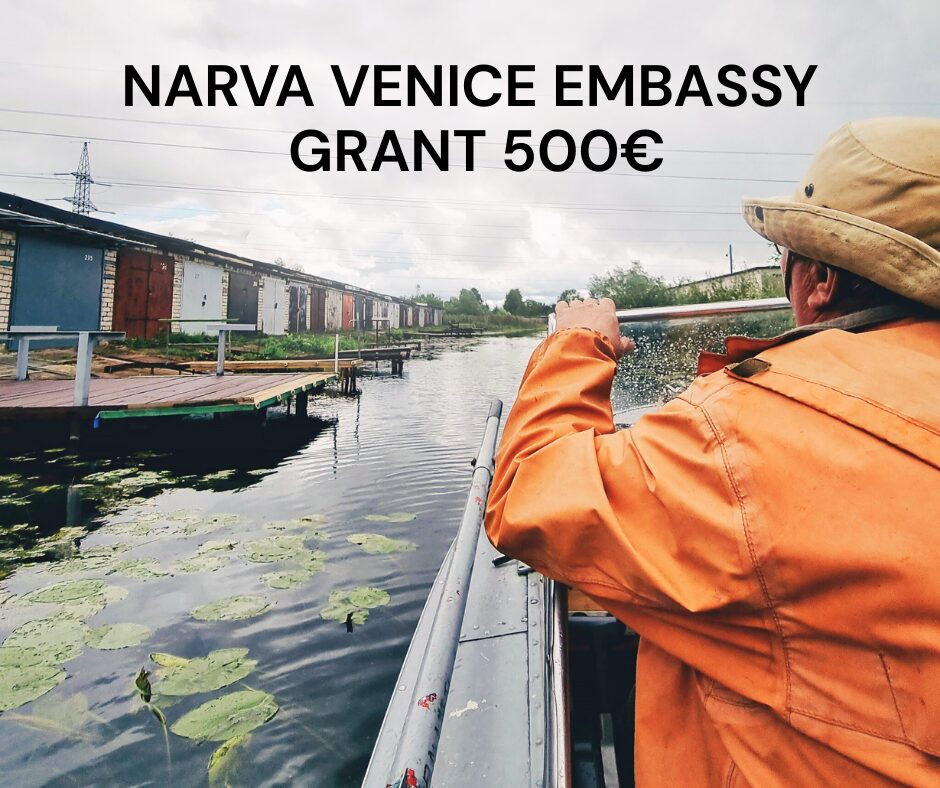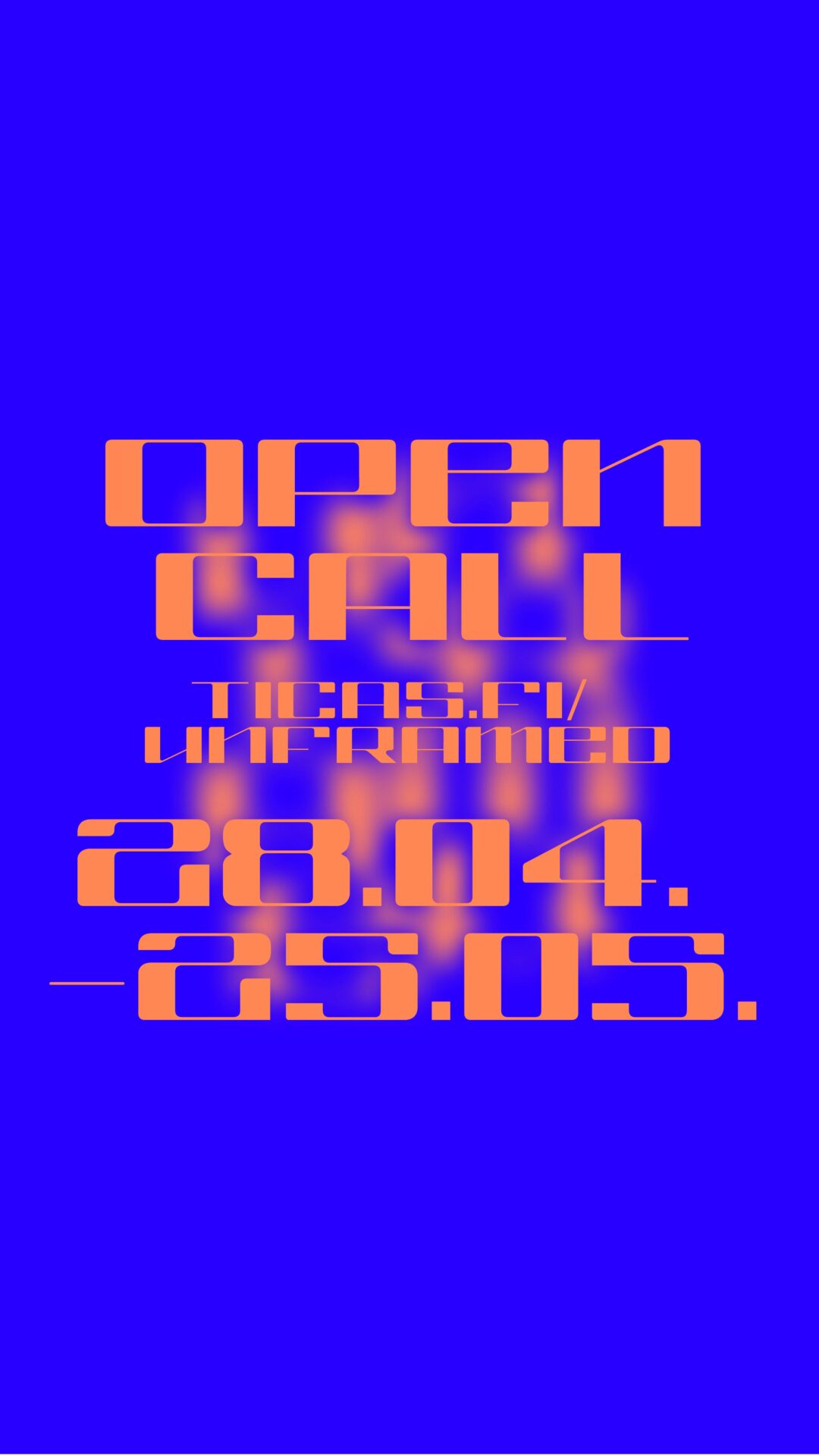A conversation with Agnė Bagdžiūnaitė, Edvinas Grinkevičius and Asta Volungė, curators at Kaunas Artists’ House, explores the industries of rational happiness and inevitable sadness. The discussion also delves into cultural tools designed to create safe spaces and institutions where we can experience and critically reflect on sadness.
Ieva Gražytė: You present the project ‘Belly-Up Dream (Dog or Fish?)’ as a contemporary context initiative, encompassing exhibitions, discursive/performative events, and an educational programme. In short, this almost year-long programme at Kaunas Artists’ House consisted of eighteen events in various formats and an uncountable number of participants. What were the personal and collective motivations behind this truly extensive and complex project?
Agnė Bagdžiūnaitė: The initial idea was to work together on a cohesive annual programme. For some time, we had felt the desire to share our expertise and create a thematic programme encompassing all the fields we curate at Kaunas Artists’ House. While at first the division into exhibition, educational and discursive programmes was clear, these boundaries blurred over time, with the programmes intertwining and complementing each other. I was particularly interested in developing and critiquing the theme of the happiness industry through the tools of the exhibitions programme. Having been engaged for a while in the context of Lauren Berlant’s Cruel Optimism, I was intrigued by the possibility of crafting an alternative narrative for the sadness industry, without which such happiness cannot exist. The theme resonated even more after I read closely Sara Ahmed’s The Promise of Happiness during one of the strict lockdowns.
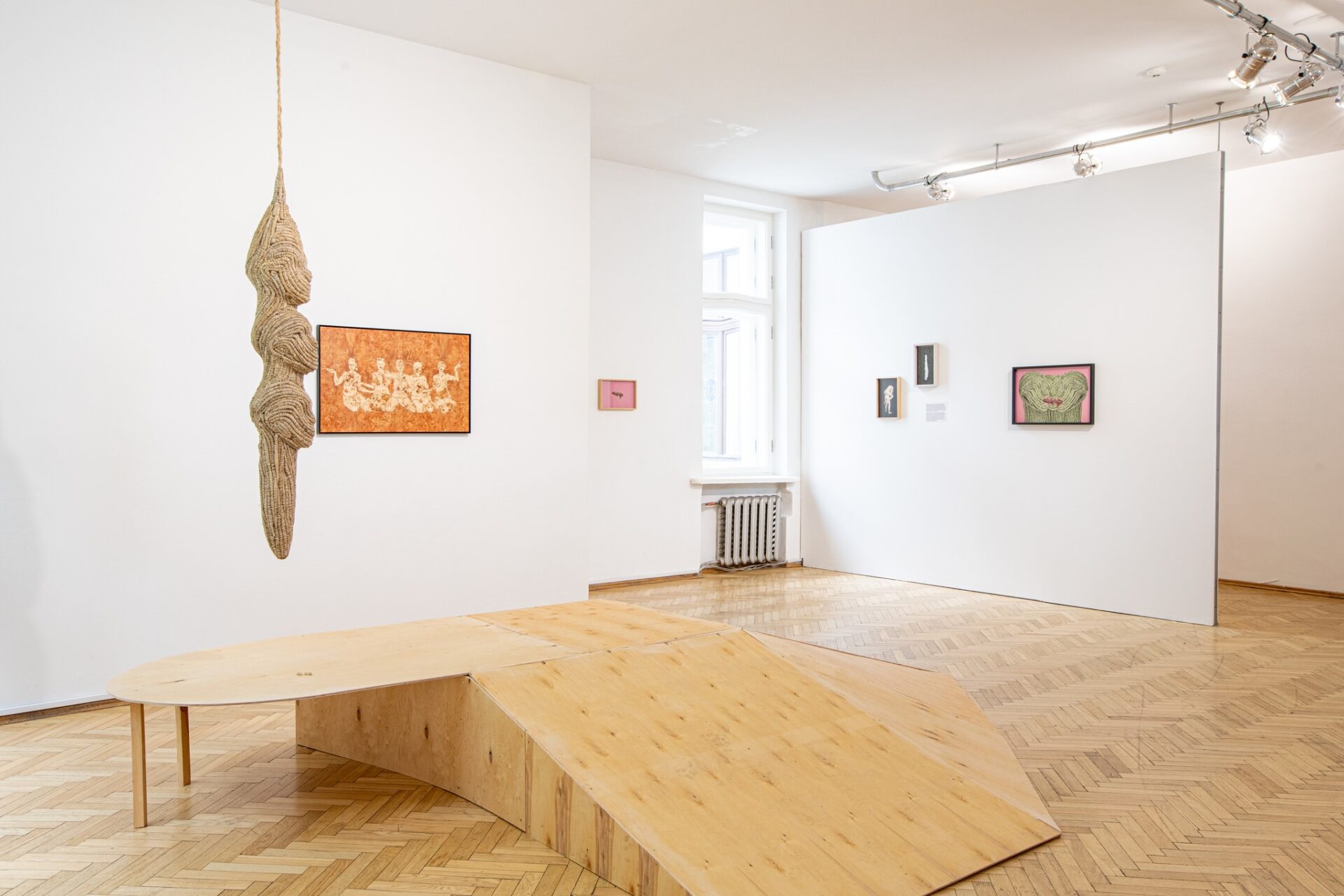
Liliana Zeic’s exhibition at Kaunas Artists’ House, 2024 July. Photo by D. Matonis
IG: The curatorial inspiration or overarching methodology of this project is drawn from Sara Ahmed’s book The Promise of Happiness, where the primary object of critique is the archetype of the ‘happy family’. It might sound amusing, but you, Agnė, Edvinas and Asta, and Kaunas Artists’ House as a whole, have been, for me and I believe for others in the Lithuanian cultural field, an example of a happy family for many years. How do you manage to nurture this connection?
Asta Volungė: Whenever I hear the sentence ‘We are more than a company, corporation or institution, we are a family,’ I take it as a sign that the emotional climate in such a workplace may not necessarily be healthy. This rhetoric often sounds like an obligation to appear satisfied and to tolerate everything. In such a ‘happy family’, it often becomes difficult to criticise the internal system. As curators of Kaunas Artists’ House, we all come from different families, and not everyone associates the concept of a family solely with happiness. For me, the first association with our team is not ‘family’. However, if I had to use the family metaphor, we would be a dysfunctional chosen family. We are connected by a multitude of shared activities and cultural initiatives beyond the scope of Kaunas Artists’ House, and these have created a bond that could easily be mistaken for the image of a family.
AB: We certainly spend more time together than with our ‘real’ families.
Edvinas Grinkevičius: I agree. We are not a happy family, and that’s precisely why we work together quite smoothly. Our professional relationships intertwine with our other social activities outside Kaunas Artists’ House. We nurture all this effort, but not necessarily with ease. Being involved together in various personal, activist and self-organisational practices, we find ourselves in diverse situations where we work, socialise and argue together, making our relationship highly dynamic. We see each other in different contexts. I believe it would be simpler to maintain strictly collegial, professional and neutral relationships. However, it is rewarding to cultivate a complex relationship where you can allow yourself to be multifaceted. Particularly in curatorial work, this creates a space where decisions are not simulated or pre-determined. Sometimes we make less calculated, more emotional yet authentic decisions, precisely because of how safe we feel in our working environment. This also allows us to share responsibilities, not feel isolated, and resist the pressure of thinking that everything depends solely on your decisions.
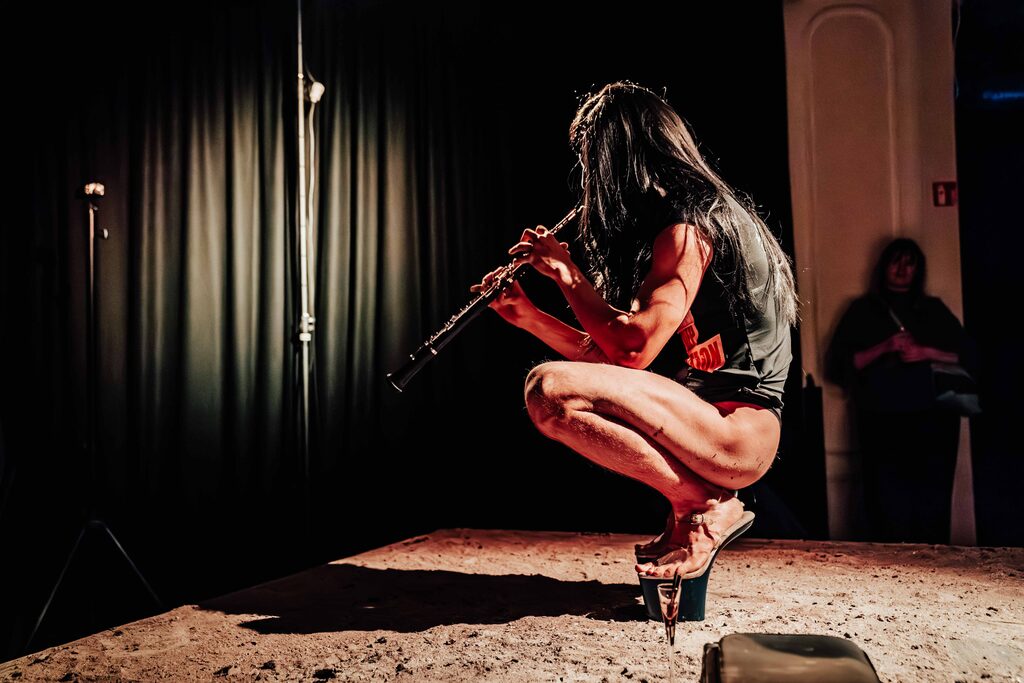
Gregor Kulla’s performance at Kaunas Artists’ House, 2024 November. Photo by Vytis Mantrimavičius
IG: It is an excellent observation that emotional and institutional safety enables unique and uncalculated curatorial decisions. You introduced the programme with a detailed and vivid curatorial text: ‘No one can explain what is happening in the world today. There’s a pervasive sense of incomprehensibility, where everything seems intangible, almost dreamlike. At the same time, it feels as though it is so difficult to grasp contemporary existence; the possibilities for changing it dissolve even further, lost in a void made up of countless fragments, whose totality evokes profound sadness. Amid this whirlwind, where ephemerality and surrealism intertwine, an acute sense of incomprehension lingers. Everything appears unearthly, almost dreamlike. Yet within this surreal tapestry a persistent question remains: if the essence of contemporary existence cannot be understood, what hope is there for reshaping it? It feels as though the very fabric of change dissolves into a void composed of fractured fragments, each amplifying a deep sense of melancholy.’ This sort of explains the title ‘Belly-Up Dream (Dog or Fish?)’. A fish swimming belly-up suggests death, perhaps symbolising surrender to uncontrollable, possibly even supernatural, currents of modernity. But what about the dog?
AV: A dog lying on its back, belly up, is usually an expression of blind trust and boundless joy. In contrast, a fish swimming belly up shows no signs of life. So even the same reaction can signify entirely different things. With the title, we wanted to emphasise the space created when one flips over an axis, belly up. Between the dog and the fish lies a space to endure, experience emotions, and critically analyse them, emotions that are inevitable when experiencing happiness, such as sadness or anxiety.
AB: For me, the most important aspect of the title is the dream as a state, rather than the dog or fish as subjects. The dream was chosen to reflect the reality in which we exist and attempt to reshape, or simply accept and come to terms with it. Acceptance is essential as an act against violence. It’s no coincidence that the exhibition programme began with the artist Zoe Williams and her interpretations of the melancholic myth of Eros. Zoe’s exhibition was essentially very erotic, as is her entire artistic expression: deeply emotional, rebellious, and at the same time ephemeral. One could say that throughout the entire exhibition programme, which each show complemented, a narrative of an erotic, highly corporeal and often nightmarish dream unfolded. One segment of the exhibition, or perhaps it’s more fitting to call all the exhibitions in ‘Belly-Up Dream (Dog or Fish?)’ parts of a single show, relocated to a completely different space, a now-closed bar called O Kodėl Ne? (And Why Not?), where the installation Total Strangeness by Žygimantas Kudirka was displayed, focusing on our collective obedience to media and the transfer of our bodies into virtual reality. In a sense, we too relocated a part of the exhibition’s body to this little-known, veiled, and now non-existent bar space, a kind of black hole. Honestly, I find it difficult to recall this literally dark part of the exhibition. It feels like a foreign object that has become part of the body.
IG: In Ahmed’s book, the concept of the happy family as the foundation of society is explored through three alternative perspectives: those of angry feminists, unhappy queers, and melancholic migrants. The latter, given current geopolitical circumstances, receive the most public attention. The project also involved several international artists.
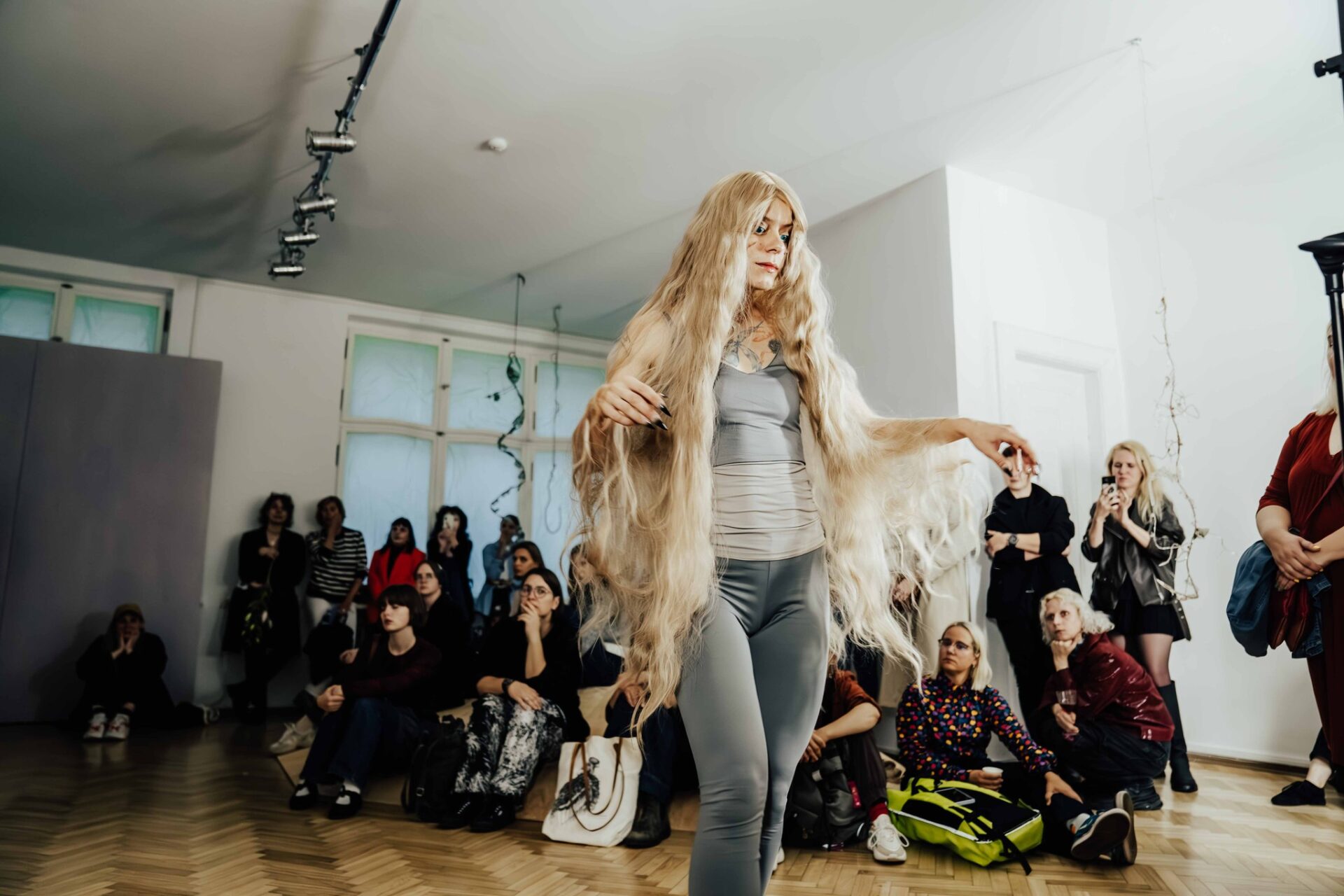
Performance by Ieva Rižė and Vaidas Bartušas during the exhibition opening of Rižė’s at Kaunas Artists’ House. Photo by V. Mantrimavičius

Ieva Rižė’s exhibition at Kaunas Artists’ House, 2024 September. Photo by D. Matonis
AB: Almost all the programme’s artists were not based or doing their creative work in Lithuania. In total, there were perhaps three local artists, although it’s difficult to say whether they would identify themselves as such. None of the artists lived or worked in Kaunas. However, the terms ‘migrant’ and ‘migration’ are politically charged today. I don’t wish to romanticise these concepts, and I approach them cautiously, especially in the context of current policies aimed at excluding specific groups of people. I am referring to the very real and violent measures being used today to push back refugees crossing the Lithuanian-Belarusian border. We barely touched upon the theme of melancholic migrants, which is particularly relevant right now and in my opinion deserves to be explored with much greater seriousness. We only scratched the surface.
If we return to the world of angry feminists and unhappy queers, vast horizons unfold. I should mention the remarkable Polish artist Liliana Zeic, who seems to embed the stories of Polish feminists in her marquetry works, continuing the craft she learned from her parents. Here, the craft itself becomes a means of narrativising the issues surrounding queer representation, while simultaneously focusing on the contours of bodies, their connections, and intertwining. In the exhibition at Kaunas Artists’ House, Liliana collaborated on the architectural set-up with Laura Kaminskaitė and Matas Šatūnas. Together, they brought Liliana’s narrative to life brilliantly, introducing shades of lavender and a sculptural object that highlighted the marquetry technique used by the artist.
AV: The first event in the programme featured Sasha Wild, emigrés who reflect on their childhood in Lithuania through their creative practice, exploring the experience of being queer on the periphery during the period of the national revival. Meanwhile, Afrang Malekian, one of the contributors to the penultimate cycle, uses kitsch and pop culture to engage in a dialogue about diasporas and migrating culture. The theme of migration can be found in the work of a significant proportion of the cycle’s artists: it is an unavoidable experience and state for many, not necessarily tied to economic reasons, but also creative and emotional ones. However, I agree with Agnė that in the current context it is crucial to distinguish migration as a theme or emotion from the forced, real act of migration and its associated consequences.

Exhibition space architects Matas Šatūnas ir Laura Kaminskaitė at Liliana Zeic’s exhibition opening. Photo by Vytis Mantrimavičius
IG: The concept of happiness as a theory of rational choice was first explored by the philosophers of the Frankfurt School, who inconsistently developed the theory of ‘the happy consciousness’. Essentially, this theory argued that rational happiness obstructs progress, individuality and resistance. For a time, the archetype of such happiness in the collective consciousness was linked to another archetype, the American Dream. Today, other universal and long-commodified images of happiness have taken hold. Meanwhile, the experience of sadness remains far more unique. This unproductive emotion, one that no one actively chooses to pursue or catalyse, is now being described as a potential, and perhaps already functioning, industry. What makes you personally saddest, and what characteristics of the sadness industry do you observe?
EG: What saddens me is that we do not have equal opportunities to grieve or feel sadness. Sadness becomes a privilege that some cannot afford, whether due to a lack of money or time, or other commitments. The broader system does not support the creation of equal conditions for these complex but important states. That is why we should strive to create such opportunities within cultural spaces.
AV: There are so many reasons to feel sadness that we become desensitised, losing our sensitivity, finding comfort and a sense of security in the mundane. Unable to fully grasp or change the ongoing wars and catastrophes, we grow apolitical and succumb to the temptation of diving into discursive details. What saddens me is that even in the cultural sphere, there is a considerable degree of apoliticism, a lack of clear positions, and silence, that tacitly endorse the status quo. Therefore, I hope that in the spaces Edvinas mentioned, we can embrace uncertainty or anxiety, and by allowing ourselves this space, find a way to engage with reality without passively resigning ourselves to it.
AB: I could answer the question what brings me joy these days more easily: it would require less listing. And I wouldn’t place such a big emphasis on sadness. For me, the best expression of how sadness can be experienced outside the normative, market-driven methods is through the interplay of body horror and humour. During the discursive programme, people watched films by the artist Marianna Simnett, which are filled with elements of horror. One might wonder why we need to depict horror, which is already so pervasive, in art as well. But its relationship with humour transforms it into something more bearable. There’s a wonderful dynamic between horror and humour that may not be accessible to everyone, but for some, understanding the sight of crows killing their young purely as horror might actually be beneficial. It shows that a fairy tale doesn’t have to be Hollywood-style cheerful.
It is no coincidence that we will conclude the exhibition (or exhibition programme) with the Finnish artist Kristoffer Ala-Ketola. While employing different forms of expression, he uses elements of drag and camp aesthetics, combined with body horror, to explore how to endure the absurdity of the here and now. I see humour both as the only way out of absolute sadness and as a means to resist the current industry of normative grieving. This resistance can only be achieved by attempting to discard our shells, something Kristoffer proposes by discarding the skeleton and embracing being a formless mass.
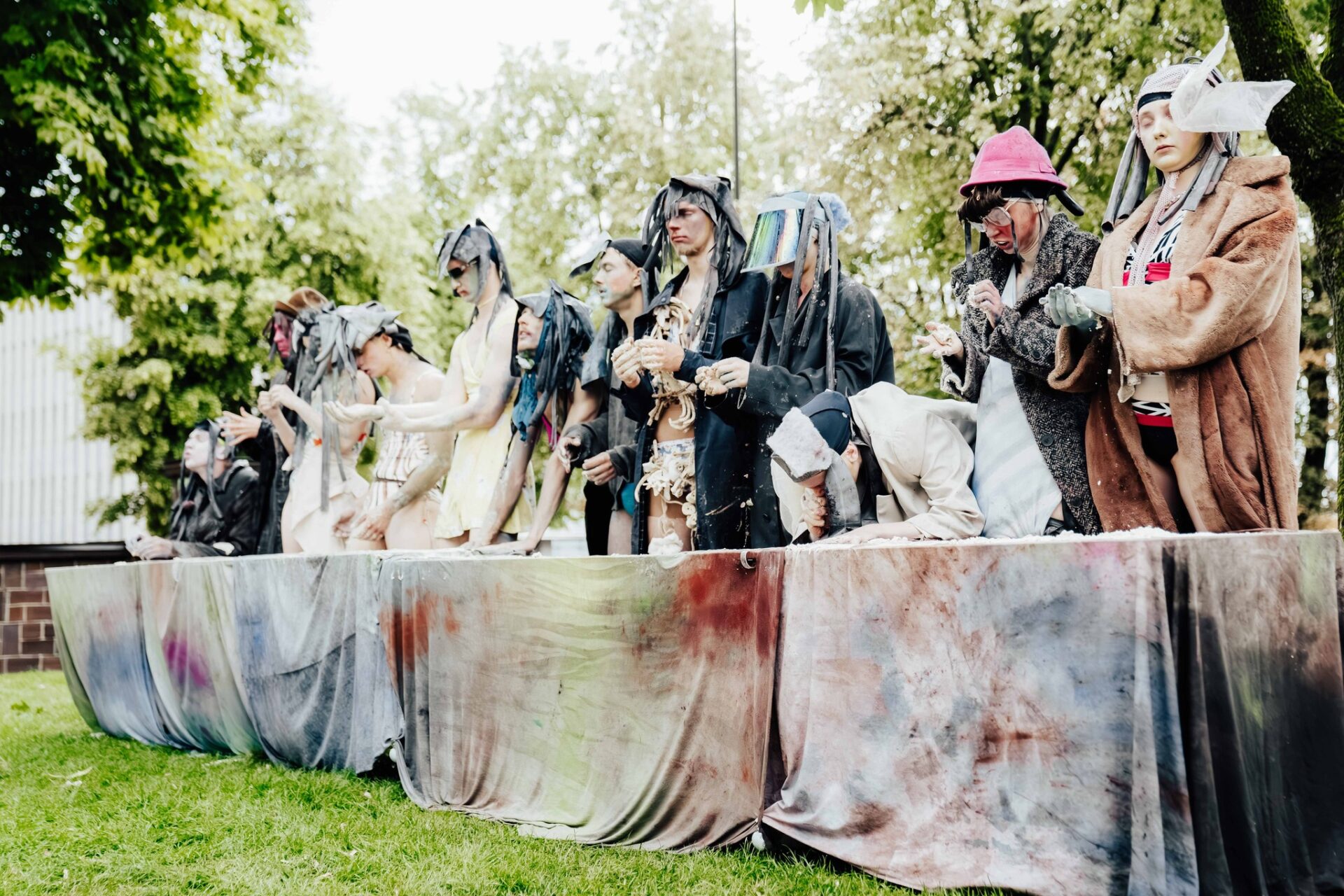
Johhan Rosenberg’s performance Post-Summer Choir at Kaunas Artists’ House, 2024 July. Photo by V. Mantrimavičius
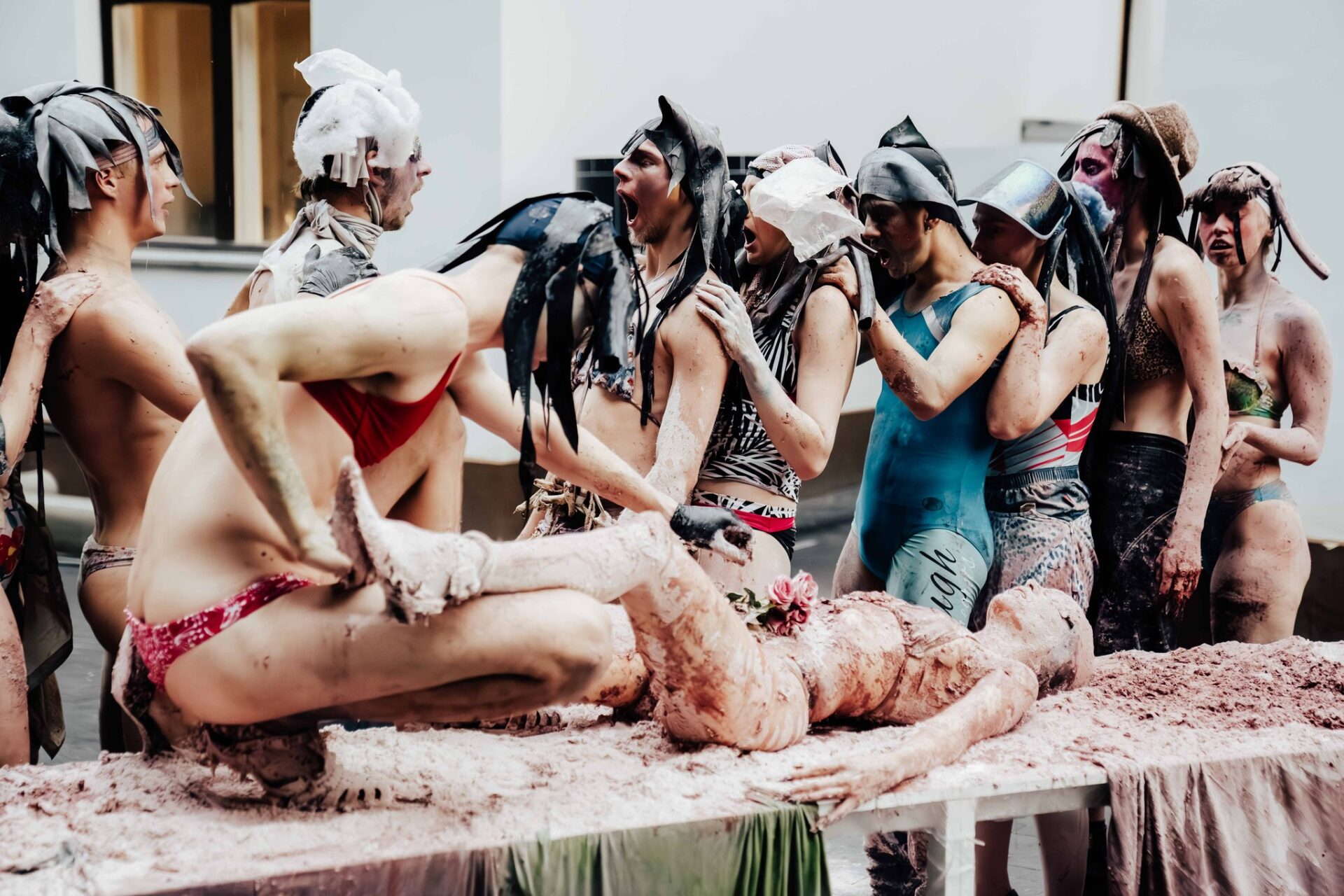
Johhan Rosenberg’s performance Post-Summer Choir at Kaunas Artists’ House, 2024 July. Photo by V. Mantrimavičius
IG: We often fail to value sadness. As Sara Ahmed stated, ‘Where we find happiness teaches us what we value, not just what is valuable.’ However, I am more interested in the actual value of sadness, particularly for the critical and expansive cultural field. How can we learn to grieve or experience sadness in a meaningful way?
AV: Sadness is often undervalued because it is perceived as unproductive, as something that hinders us from fulfilling our social and economic functions. It is only deemed useful insofar as it accelerates the consumption of sadness-related goods and services, such as yoga, various therapies, self-help books, and courses. These products are often designed to divert sadness, rather than allow us to fully feel and reflect on it.
AB: I would like to interject that there’s nothing wrong with not wanting to be sad. We chase happiness in ways we know or have been taught, whether it’s temporary or not. To quote Jason Read, ‘We desire not necessarily what is right or wrong but what brings joy, increases our capacity to act, and avoid what brings sadness. It is precisely such encounters that determine our relationships with objects and how we value them.’ I came across this quote when I was writing about part of the exhibition by the artistic duo Liudmila, where a belief in luck, personified by the goddess Fortuna, is playfully employed. This belief, trapped in a Soviet-era lampshade or a 1990s slot machine in the exhibition, reveals a certain attachment to normative sadness, never quite reaching the American Dream. So perhaps sometimes it’s not even worth being sad?
IG: Negativity also fuels the consumption of online news. The ratio of positive to negative headlines in global news streams is dramatic, which is why some broadcasters have started limiting the amount of negative news in the media to protect the emotional well-being of their audiences.
AV: The educational programme originated from a need to listen to the emotional world of the younger generation, a generation that grew up with the internet and a constant global stream of negative news. The first event in the project was co-curated by a group of young people. This generation, often portrayed on social media as ‘snowflakes’, incapable of working, and dreaming of unrealistic future scenarios, is far more engaged with global political issues and current events than my peers ever were. Discussions with them brought to light themes later developed by participating artists: climate anxiety, emotional self-preservation, relationships with hierarchies, and, unfortunately, the persistently painful experience of being queer.
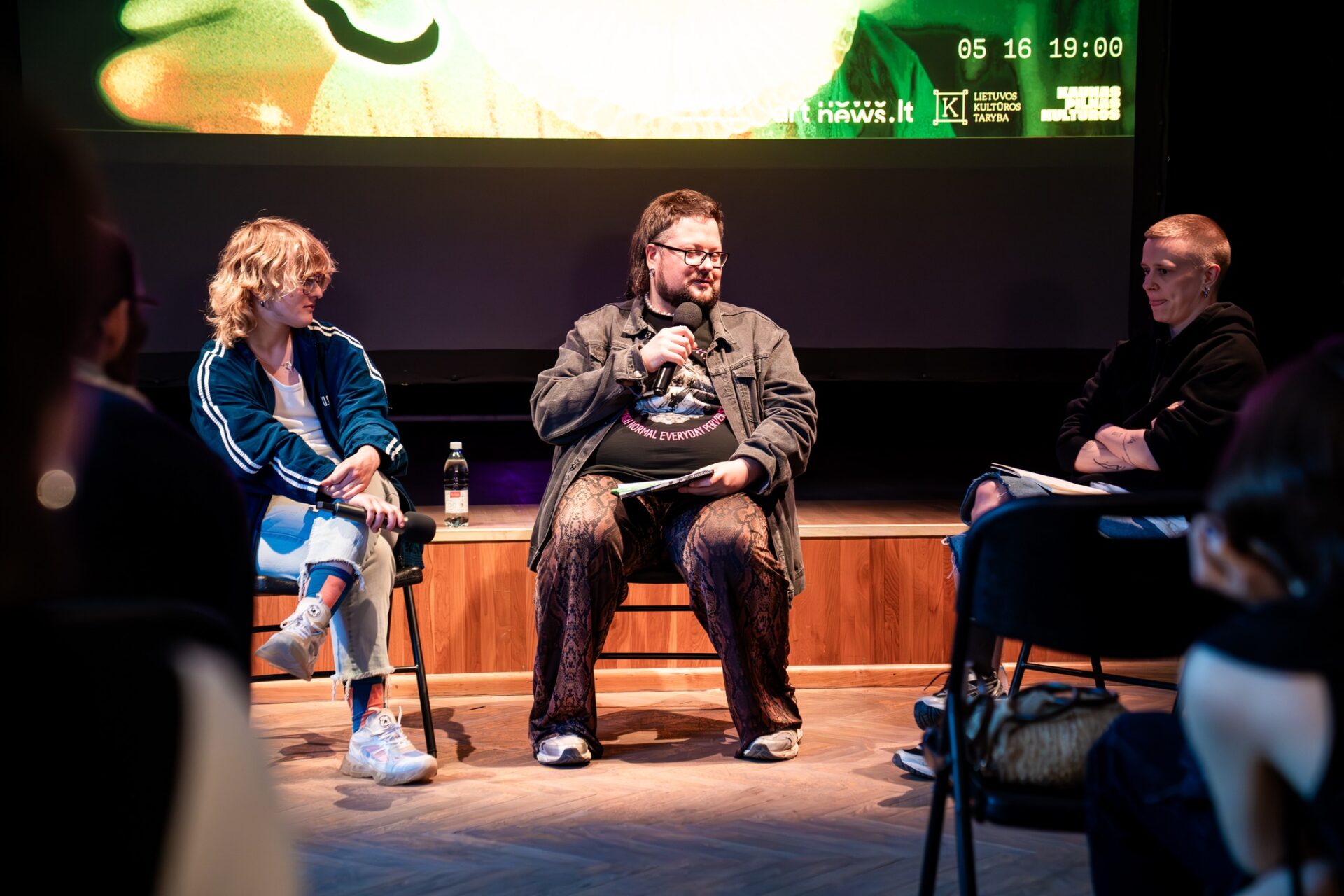
Edvinas Grinkevičius in conversation with Sasha Kochan and Teo Ala Ruona about Paul B. Preciado film Orlando. Photo by V. Mantrimavičius
AB: This led to a beautiful collaboration with SODAS2123, thanks to Edvinas. Their residency programme focusing on the theme of celebrations was a perfect fit for us. It provided an excellent opportunity to weave and expand the project’s educational programme, which included events such as a ‘Name Day Party’ with the artist Ollie Hermanson, and a performative presentation of climate change issues in a public urban space with the artist Kirsty Kross, among others.
EG: Yes, as I co-curate the celebrations residency programme at the SODAS2123 cultural complex with Monika Kalinauskaitė and Aušra Vismantaitė, it seemed meaningful to present the practices and activities of the residents in Kaunas. This collaboration enriched the programme, especially since many of the artists participating in the residency work with socially and politically engaged practices. For instance, during one event, a non-binary person from Jonava, visiting Kaunas Artists’ House for the first time, shared how much it meant to them to be in such a safe space. Creating safer spaces for various vulnerable groups through culture is a vital part of the programmes I curate.
AV: The framework of the educational programme is quite broad, with various event formats intertwining. The events in this part of the project ranged from a participatory performance in a city square with Kirsty Kross, to a two-and-a-half-hour listening session with Daina Pupkevičiūtė. The aim was for the different elements of the programme to complement each other not only in form but also in content, offering diverse approaches and perspectives.
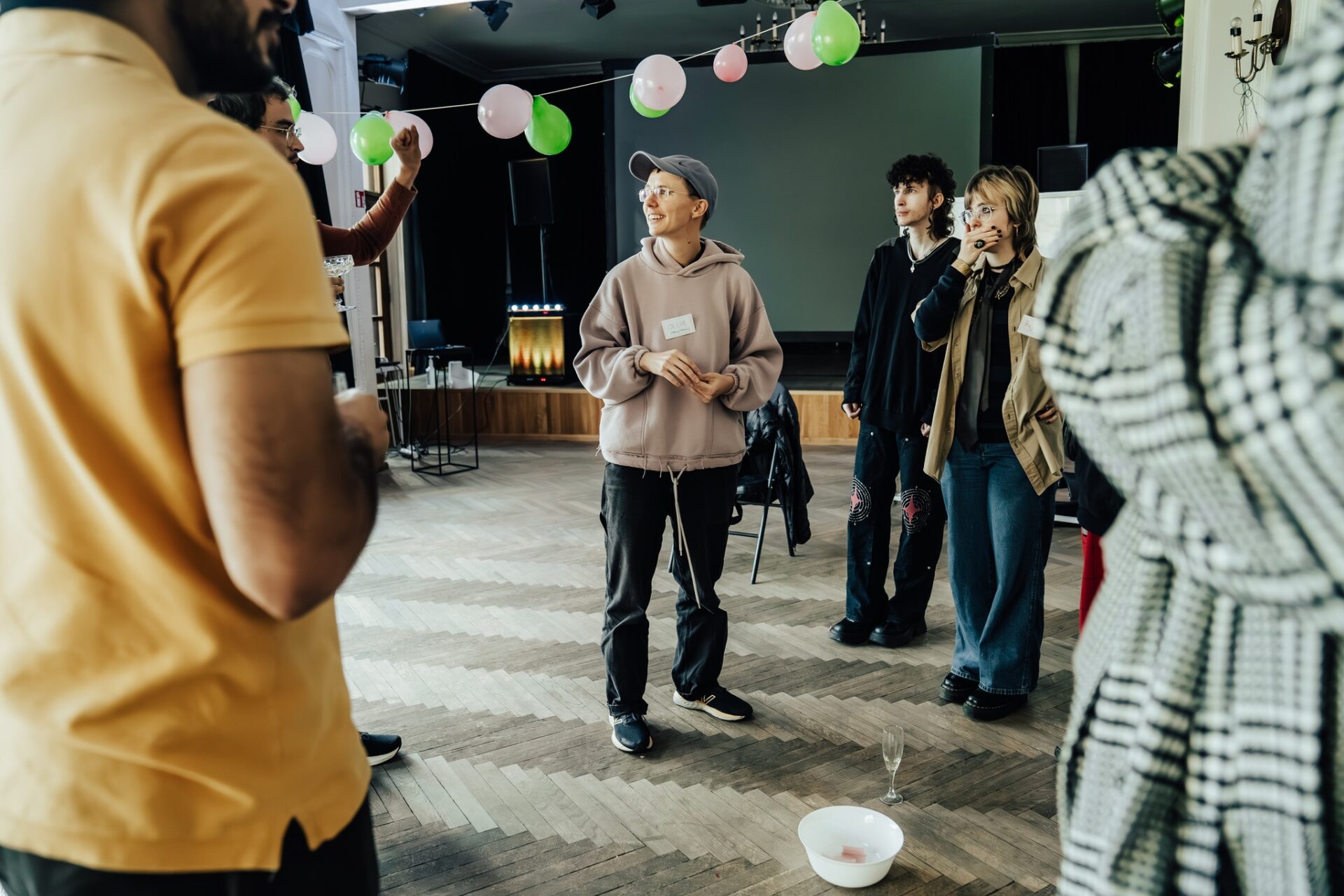
Ollie Hermansson’s (Sodas2123 resident) workshop Name Party at Kaunas Artists’ House. Photo by V. Mantrimavičius
IG: I’d like to end the conversation with a naive question: does sadness contradict beauty, the primary function of art?
EG: At the opening event of this project, readings from Sara Ahmed’s book The Promise of Happiness, at which we shared excerpts relevant to us and the programme, I was reminded of one of the first lesbian bestsellers, Spring Fire, published in 1952 by the author Marijane Agnes Meaker under the pseudonym Vin Packer. The author was required by her publishers to ensure that the love story between women in the novel would not have a happy ending as a condition for its publication. It seems that this narrative was carefully cultivated for a long time, teaching us that we and our queer experiences could exist, but only as unfulfilled and unthreatening to normative society. This lack of fulfilment continues to be conveniently depicted, not only in Hollywood films and literature, but also in broader social and political contexts.
Thus, when reflecting on this recurring narrative of an unhappy ending in the context of the performative/discursive programme, I began to see the entire programme as a contemporary procession of lamentations. However, these lamentations are not meant to conform or surrender, but to find strength in vulnerability. These lamentations do not merely reiterate the leitmotif of the unhappy ending; they resist and reclaim it. We find strength in our unfulfilled state, choosing not to follow the normative path. This idea resonated in the performances by Sasha Wilde, Johhan Rosenberg, Gregor Kulla and Paulius Janušonis, as well as in Paul B. Preciado’s film Orlando, which had its Lithuanian première within the framework of our programme. Through diverse aesthetic languages and performative practices, the programme’s artists employed methods of personal ethnography, using personal experiences to analyse and interpret sociocultural phenomena. They created sensitive, emotionally engaging narratives that offered alternative perspectives on the complexities of everyday life, sexuality, corporeality, and the contradictions inherent in contemporary world-views.
Happiness is often understood as something we should share and rejoice in together, but I believe it is important to attempt consciously to reverse these notions. It is sadness, in fact, that provides the opportunity to experience and understand joy. In the programme, deeply individual emotions, such as mourning and sorrow, could be experienced collectively. Perhaps this is how an alternative ‘happy ending’ takes place, through collective resistance to the prohibition of a happy ending.
AV: We live at a time when traditional social algorithms for dealing with sadness or crises are considered outdated or have been completely forgotten. Practices such as lamentation, pathways sprinkled with spruce branches leading to the home of the deceased, or rituals that give a shape to the expression of negative emotions, have been replaced by the so-called sadness industry, commercial self-improvement products aimed at individual ‘feel good/better’ outcomes. These products often ignore the fact that we live surrounded by tragedies, the majority of which are far from natural. Art and culture have the potential to create, if not structures, then at least tools for rethinking these situations, tools that acknowledge their structural roots and relieve the pressure to ‘get better’.
AB: Reflecting on the contemporary context, avoiding sadness is possible only through an infantile denial of it. In any case, sadness manifests itself even in its denial. Both in the exhibition programme I curated and in the broader programme, the aim was to invite artists to resist normative happiness and normative perceptions of happiness. The exhibition programme reflected this particularly well, for example in the works of Ieva Rižė, where nails, like hooks, become the central character. These nails cling to life and to objects that bring happiness. This metaphor resonates with everyday human existence: after all, you can’t hang on by your nails for long. In that absurd hanging, you remain a strange, misunderstood in-between, so let’s hang.

Zoe Williams’ exhibition at Kaunas Artists’ House, 2024 April. Photo by Darius Matonis

